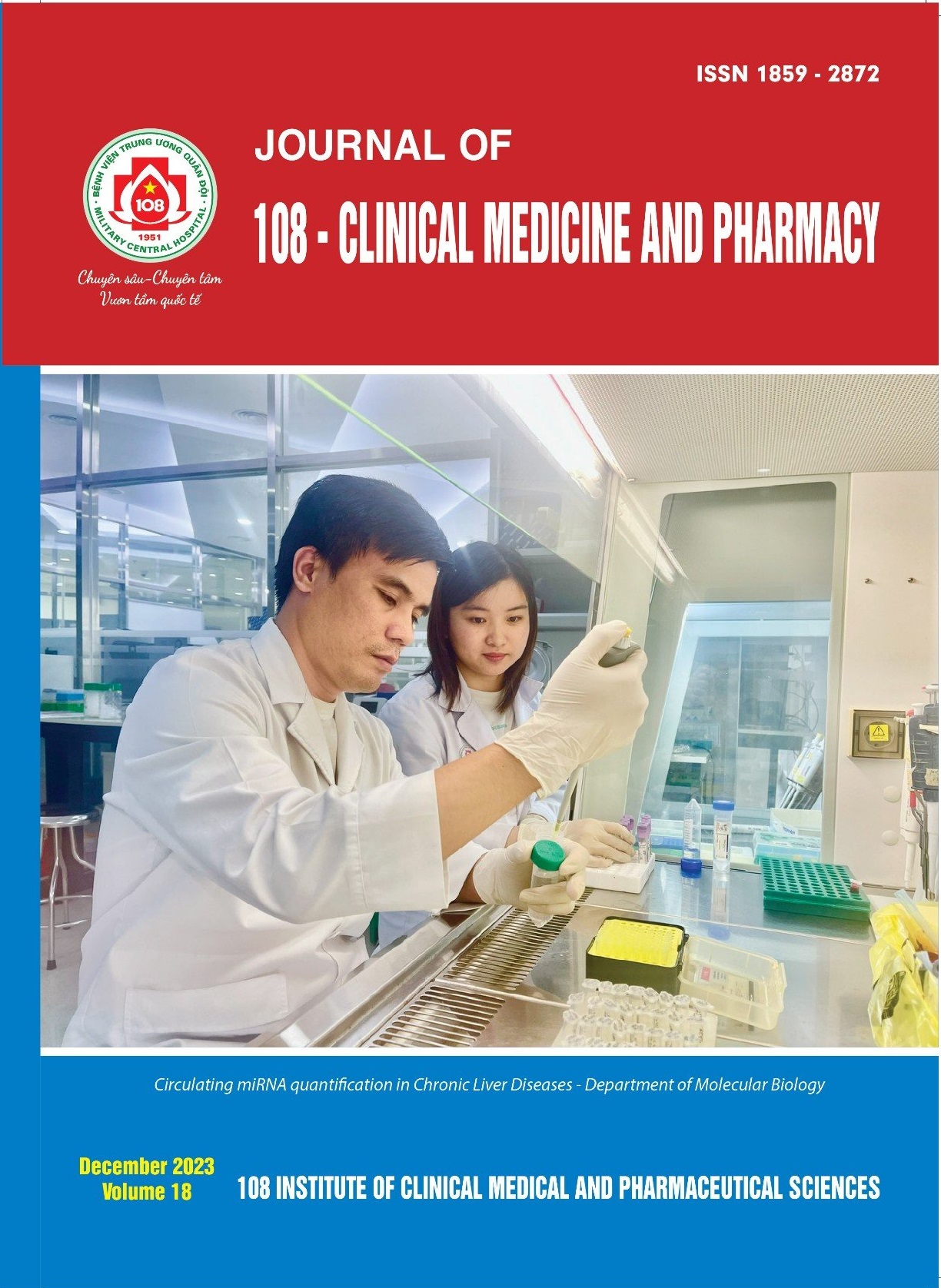Nutritional integration in liver transplantation for 14 year old children in the 108 Military Central Hospital: A case report
Main Article Content
Keywords
Abstract
A 14 year old girl diagnosed with primary biliary cirrhosis, gastrointestinal bleeding, and esophageal varices underwent an assessment of her nutritional status using SGA, BAZ (Body Mass Index for age), and MUAC (Middle Upper Arm Circumference). Prior to transplantation, her SGA score was categorized as C, her BAZ was -1.63 standard deviations, and her MUAC measured 18.5cm. Patients receive specialized care tailored to the different stages of their condition following transplantation. In the early post-transplant period, nutritionists employ a combination of enteral and parenteral nutrition. By the end of the first week after surgery, the patient's total energy intake reached 1582.7 kcal, with a protein intake of 1.7g/kg, and her SGA score improved to B. Starting from Day 21, protein and energy intake increased to 2.4g/kg and 30kcal/kg/24h, respectively. Upon discharge, the patient exhibited enhanced nutritional status, with an SGA score of B, a BAZ of -1.56 standard deviations, and a MUAC measurement of 20.0cm. She also experienced a weight gain of 1.5kg within one month of leaving the hospital. Consequently, the implementation of a Nutritional Management Plan, structured around the distinct stages of liver transplantation, is of paramount importance, particularly for pediatric patients.
Article Details
References
2. Bộ Y tế (2019) Dinh dưỡng lâm sàng. Nhà Xuất bản Y học.
3. Goddard EA (2010) Nutrition in children posttransplantation. South African Journal of Clinical Nutrition 23(1): 19-21.
4. Julio CW, Barbara dAW, and Henrique dAW (2016) Pediatric liver transplantation, in frontiers in transplantology. IntechOpen.
5. Kelly DA, Bucuvalas JC, Alonso EM, Karpen SJ, Allen U, Green M, Farmer D, Shemesh E, and McDonald RA (2013) Long-term medical management of the pediatric patient after liver transplantation: 2013 Practice guideline by the American Association for the Study of Liver Diseases and the American Society of Transplantation. Liver transplantation 19: 798-825.
6. Loeb N, Owens JS, Strom M, Farassati F, Roestel KV, Chambers K, Kean P, Ng VL, Avitzur Y, Carricato M, Wales PW, and Courtney-Martin G (2018) Long-term follow-up after pediatric liver transplantation: Predictors of growth. Journal of Pediatric Gastroenterology and Nutrition 66: 670-675.
7. Mouzaki M, Bronsky J, Gupte G, Hojsak I, Jahnel J, Pai N, Quiros-Tejeira RE, Wieman R, and Sundaram S (2019) Nutrition support of children with chronic liver diseases: A joint position paper of the North American Society for Pediatric gastroenterology, hepatology, and nutrition and the European Society for Pediatric. Journal of Pediatric Gastroenterology and Nutrition 69(4): 498-511.
8. Viện Dinh dưỡng Quốc gia (2017) Bảng thành phần hóa học thức ăn Việt Nam 2017. Nhà xuất bản Y học.
9. Pawłowska J (2016) The importance of nutrition for pediatric liver transplant patients. Clinical and Experimental Hepatology 2(3): 105-108.
10. Pawłowska J, Socha P, and Socha J (2007) Nutrition in pediatric patients before liver transplantation. Annals of the National Institute of Hygiene, 58: 111-118.
11. Plauth M, Bernal W, Dasarathy S, Merli M, Plank LD, Schütz T, and Bischoff SC (2019) ESPEN guideline on clinical nutrition in liver disease. Clinical Nutrition 38(2019): 485-521.
12. WHO and UNICEF (2009) Growth reference data for 5-19 years, Department of Nutrition for Health and Development, Editor World Health Organization: Geneva.
13. Yang CH, Perumpail BJ, Yoo ER, Ahmed A, and Jr. JAK (2017) Nutritional needs and support for children with chronic liver disease. Nutrients 9: 1127-1142.
 ISSN: 1859 - 2872
ISSN: 1859 - 2872
